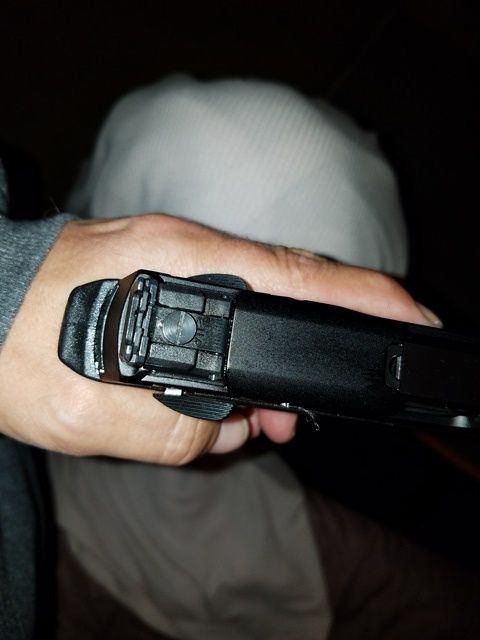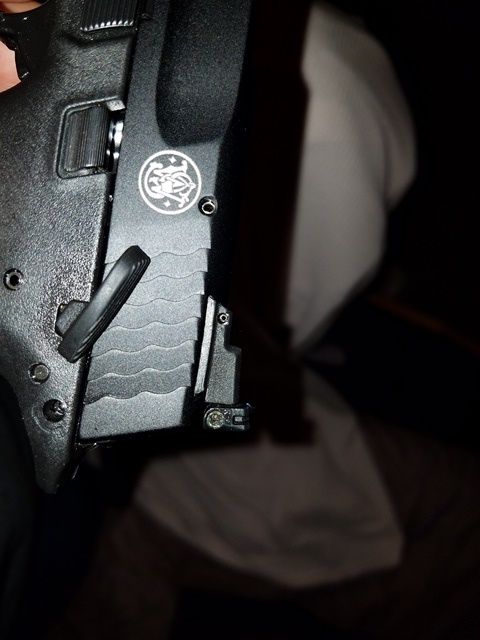A general rule: Move the rear sight in the direction you want you bullet impact to move.
Move the rear sight up to raise the group,for example.
Most adjustable sights like yours have a "click" or graduation value.It might be in your owners manual.It might be something like one inch at 25 yds,but I can't tell you.
kraigwy has it right,he was teaching a valid,useful principle.If you are drifting a sight in a dovetail for windage,or filing the front sight for elevation,it really good to know how much to move the sight.
Often a depth micrometer or dial indicator or even calipers can be used to verify how much to move the sight.
If you are using a hammer and punch,counting hammer whacks and white knuckles,,and walking a 200 yd round trip for each "poke and hope" adjustment..a little math comes in handy.Actually,the old match shooters had a specialized micrometer to fit the military sights on their Krags and 1903's to measure sight corrections more precisely.
Its an extension of the rule in geometry that triangles are proportional.Its a long,skinny triangle,but its still a triangle.
If you had a 12 in sight radius,and you fired it at a 12 inch range,,a sight adjustment of 1/8 inch would move point of impact 1/8 inch.
If you went to a range of 24 inches,the same adjustment would have a value of 2/8 inches,or 1/4 in on target. At 96 inches,or 8 feet,or 8 "sight radius units" the 1/8 in adj would have a value of 8/8 in,or 1 in.
So anytime this question comes up,remember you need to know the distance to the target,measured in units of "sight radius". That is how many times a sight correction will be multiplied on target. The key!! Your initial triangle is based on the sight radius. If one "sight radius" is 7 1/2 inches,so be it! 100 yards is 3600 inches,or 480 sight radius units. So,what would a .001 sight movement do at 100 yds? 0.480 in.Pretty close to 1/2 inch.
You can use that same "multiplier" as a divider.If I want 2 inches on target,dividing 2 by the multiplier will give me a decimal sight correction.
How might this be handy? Suppose ,when I center the graduations for windage on my M-1 Garand on a calm day,and my group center is 3 inches left at 100 yds. Its kind of handy if the graduations center my group,rather than having to remember clicks.
Well,on the front sight is a clamp screw that takes an allen wrench.I can easily move that sight,without a rock or a claw hammer. The trick is just figuring out a way to measure sight movement,because on a Garand,I know .008 inches sight movement gives me 1 in on target.
AND since you move the REAR sight in the direction you want the point of impact to move,remember to do the opposite with the front sight.
Forgive me for getting so basic.Not trying to talk down to anyone.I wanted to write it so folks could remember.


